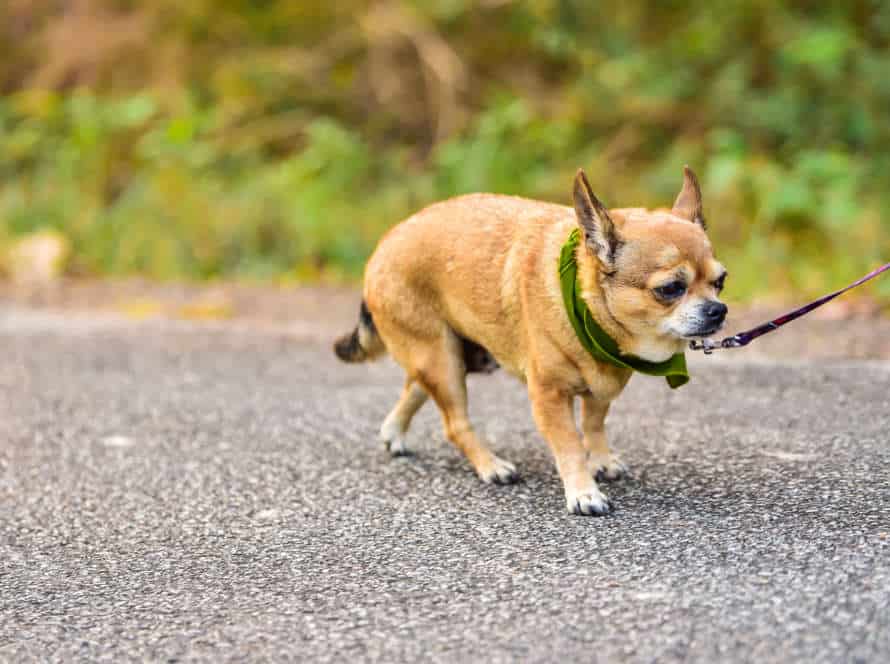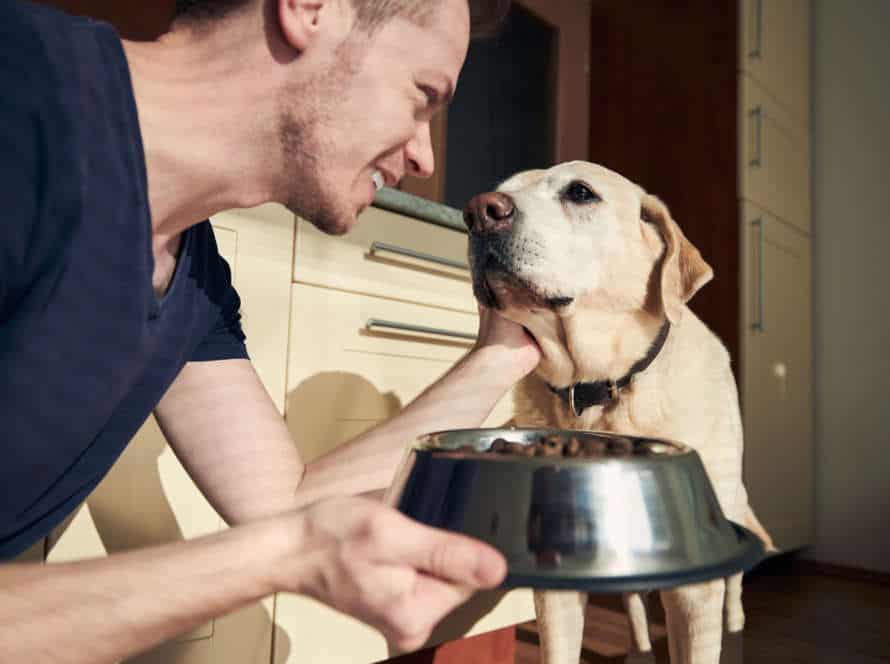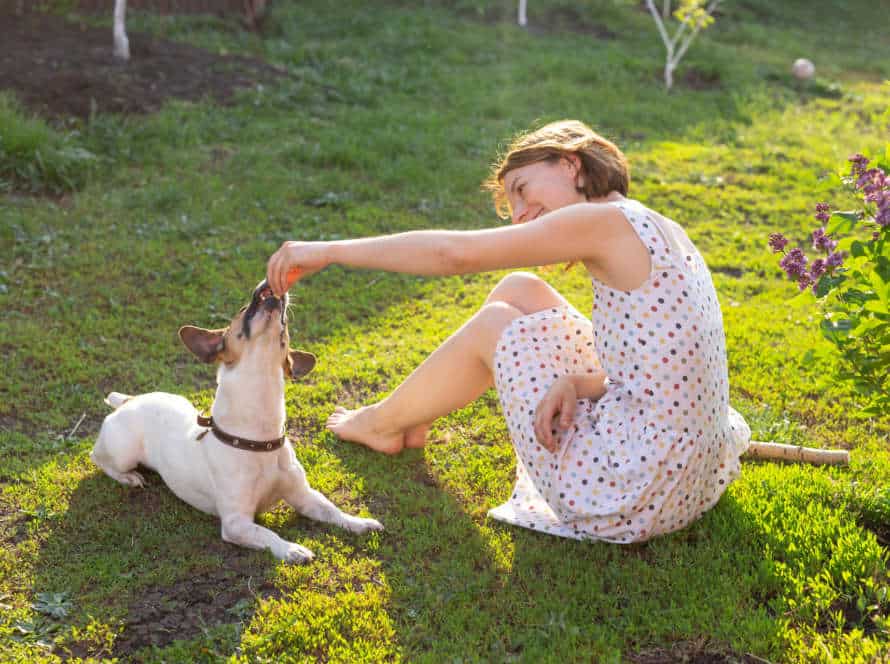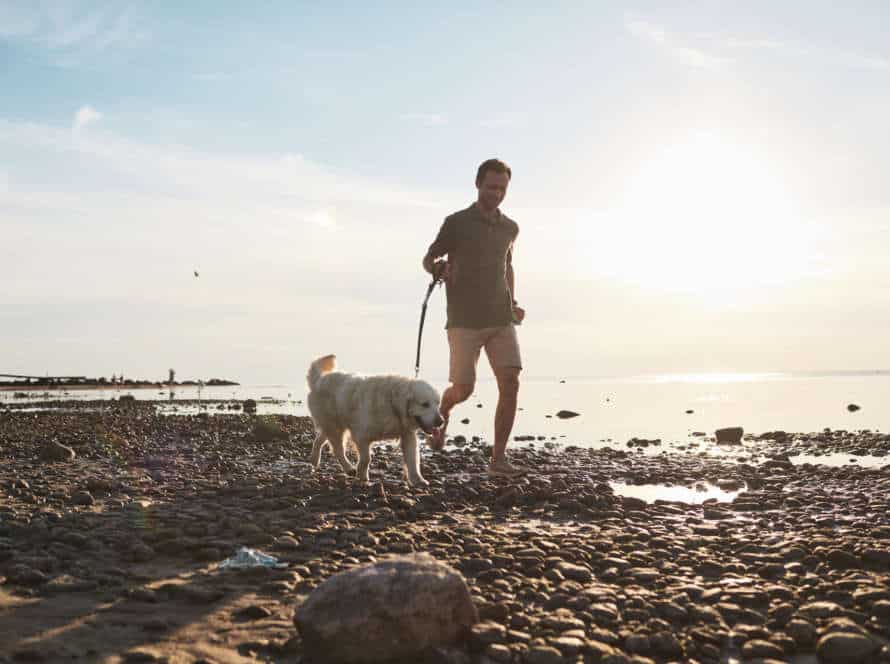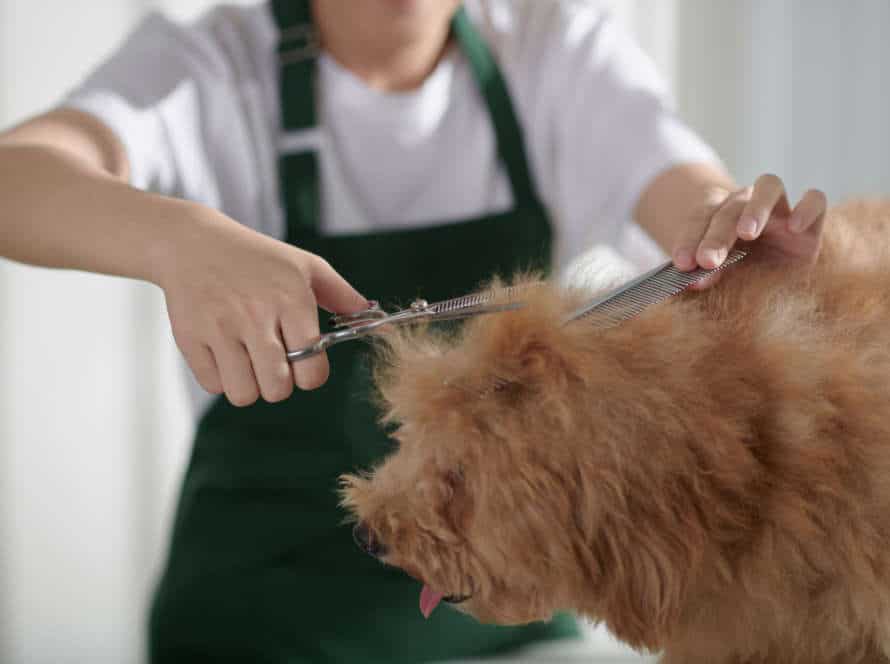Exercise Benefits for Adult Dogs
Exercise is essential for adult pooches. It helps keep their weight in check, makes them more lively, and builds their muscle strength and endurance. Plus, it can even promote better behavior! Let’s take an in-depth look at the perks of exercising for adult dogs.
Increase in longevity
Exercising regularly can seriously extend the lifespan and overall wellbeing of adult dogs. Here are the perks and workout plans that can keep your pooch in shape and good health:
Benefits:
- Weight control: Doing exercises routinely can ward off obesity and any related health issues in dogs.
- Muscles and bones gain strength: Exercising will beef up your dog’s muscles and bones and make them more agile.
- Cardiovascular health improves: Doing exercises can lessen the risk of heart disease and help keep normal blood pressure and cholesterol levels.
Exercise routines:
- Going for walks: Walking every day can help your canine burn calories, improve joint health, and keep a healthy weight.
- Fetching: Playing fetch can give mental stimulation and boost agility and coordination.
- Swimming: Swimming is a low-impact exercise that can help improve cardiovascular health and build muscle strength.
Pro-tip: Speak with your vet to work out the best exercise routine for your dog, considering their age, breed, and health condition.
Improvement in joint health
Exercising regularly can enhance joint health in adult dogs. Exercise maintains joint mobility, makes them more flexible and builds strength, lowering the chances of joint-related issues like arthritis. Here are a few exercises that benefit adult dogs:
- Walks: Take your pup for daily walks – this helps keep the joints active and prevents inflammation and stiffness.
- Swimming: Low-impact swimming can make their muscles stronger and increase flexibility, while placing minimal strain on the joints.
- Fetch: Playing fetch is a fun way to make them exercise. Use a soft toy to avoid stressing the joints.
- Running: Start running slowly and gradually boost intensity to prevent injury.
Pro tip: Consult a vet before beginning any new exercise routine for your adult dog – tailor it according to their needs and health.
Decrease in stress and anxiety
Exercising can bring down stress and anxiety in adult dogs. It lowers cortisol, a hormone connected to stress. Here are some ways to keep your dog healthy and active:
- Daily walks: Walks give dogs new experiences, people to meet and other animals to encounter.
- Playtime: Fetch and tug-of-war provide physical and mental stimulation.
- Swimming: Swimming is a low-impact exercise for dogs with joint issues or recovering from injury. It strengthens muscles too.
- Agility courses: Agility training is a fun and challenging way to exercise your dog. It’s great for motor skill refinement.
Before you start any exercise routine, chat with your vet. Pro tip: Make exercise a bonding experience with your pup!
Types of Exercise for Adult Dogs
Adult pooches need regular exercise to stay healthy and content. There are lots of exercises you can do with your pup, like swimming, running, and even agility courses. It depends on your dog’s breed and size which exercise is best. Let’s explore the types of exercise available for adult dogs.
Daily Walks
Daily walks are great for your adult dog’s health and happiness. Exercise should be tailored to your dog’s energy levels, size, and age. Here are some of the best ways to keep them fit and content:
- Walking – Keeps your pup’s heart healthy and mentally stimulated.
- Playing fetch – Exercises their body and mind.
- Swimming – Great low impact exercise, perfect for joint or mobility issues.
- Hiking – Perfect for dogs with a lot of energy.
- Agility training – Builds trust and socialization.
It’s essential to pick an exercise routine that best suits your pup. Exercise contributes to their overall well-being.
Jogging or Running
Jogging or running is great exercise for adult dogs. Keep them healthy and active! Before you start, make sure they’re capable. Increase intensity and duration over time. Here are tips:
- Start with short distances.
- Gradually increase length and intensity over several weeks.
- Watch for signs of fatigue like panting, slowing down, lagging. Adjust the pace.
- Run on grass or dirt, not pavement.
- Bring water and take frequent breaks.
- Make sure your pup has vaccines and flea/tick prevention.
- If not used to physical activity, check with your vet first.
Playing fetch or frisbee
Playing fetch or frisbee is a great way to keep your adult pup in shape and give’em the exercise they need for a fit life! Here are the perks of playing with your pooch:
- Exercise: Fetch and frisbee involve running, jumping, and lots of movement- perfect cardio!
- Bonding: Quality time with your pup will boost your connection!
- Mental Stimulation: Track and catch that toy! Time to get those doggy brains going!
- Positive Reinforcement: Fetch and frisbee are excellent for reinforcing their behavior and training.
Just remember to pick a safe spot for playtime, use the right toys for their size and age, and always keep an eye on them.
Swimming
Swimming is a great exercise option for adult dogs. It’s low-impact and gentle on joints. Plus, it keeps them cool and boosts cardio fitness. Consider these types of swimming exercises:
- Pool swimming in your backyard or public pool. Supervise and use a flotation device if needed.
- Lake or river swimming for dogs who love nature. Beware of currents, wildlife, and water quality.
- Underwater treadmill for dogs recovering from injury or surgery. It increases range of motion and muscle tone.
Remember to consult your vet before starting any new exercise. Pro Tip: Bring a towel to dry your dog after swimming!
Creating an Exercise Routine for Adult Dogs
Exercising is key for an adult dog’s health and vigor. To stay fit and healthy, create a regular exercise routine. This will help guarantee your dog’s health, joy, and physique. Here are some tips and advice to establish an exercise routine for your adult dog.
Determine the dog’s individual needs
It’s vital to assess your adult dog’s individual needs before making an exercise routine. Age, breed, size, health, and lifestyle play an important role to get the best out of the routine.
For instance, big breeds need more exercise than small ones. High-energy breeds like Border Collies and Huskies may need intensive activities such as running or hiking. On the other hand, older dogs need less intense exercise and more rest.
Also, if your dog has any health conditions like arthritis or heart disease, make sure to adjust the exercises accordingly. Consulting with a vet can help determine the right activities and intensity for your pup’s individual needs.
By customizing the exercise routine, you can help ensure your dog stays healthy and active.
Set achievable goals
Creating an exercise routine for adult dogs? It’s important to set achievable goals based on breed, age and health. These will help it be effective and last. Here are some tips:
- Figure out your dog’s breed and age-related exercise needs.
- Look at their current fitness level and any health issues.
- Start with short sessions, then gradually increase duration and intensity.
- Include different exercises: brisk walks, running, fetch & agility games, swimming.
- Monitor your dog’s behaviour and adjust the routine if needed. Keep them enjoying it and healthy!
Consider factors like weather and time constraints
Creating an exercise routine for your adult dog? Consider factors like weather and time constraints – vital for a happy, active life. Here’s how:
- Think about your pup’s breed and age – this sets the level of physical activity.
- Start easily and build up intensity and duration slowly.
- Choose activities that your dog enjoys, e.g. jogging, fetch or swimming.
- Be aware of weather conditions, and adjust the routine accordingly.
- Schedule regular sessions that fit into your daily routine.
- Consistency is key – exercise with your pup to bond and stay healthy together!
Simple Tips for an Active Lifestyle
Exercising your adult pup is a must! It’ll help with their physical health, plus build a strong bond between you and your pet. Mental stimulation is key to keep your furry pal active and engaged.
Here are some simple tips for making a routine with your adult dog to keep them healthy and fit:
- Start with short walks around the neighborhood and gradually increase the time and distance.
- Find a local dog park where your pup can run and play with other dogs.
- Play fetch or other games with toys in your backyard or a nearby park.
- Enroll your dog in obedience classes for mental stimulation, socialization, and to learn new skills.
- Try hiking or jogging together on trails or paths.
Take frequent breaks throughout the day to avoid continuous periods of sitting
If you’re sitting a lot throughout the day, frequent breaks are key to staying healthy, alert and active. Here’s a few tips:
- Set a timer for 30-60 minutes, stand and stretch your legs.
- Take a short walk around your house, office or outside.
- Squats and lunges are great for getting the blood flowing.
- Incorporate physical activity into your routine, like taking the stairs or walking to the store.
For dogs, keeping active is essential for good health. Exercise or playtime can keep dogs fit and extend their life expectancy. Pro tip: Regular physical activity reduces the risk of chronic illnesses, stress and improves overall wellbeing.
Incorporate indoor activities for rainy or cold days
When it’s wet or cold outside, adding indoor activities is a great way to stay active. Here are some ideas to keep you and your pet busy indoors:
For Yourself:
- Download fitness apps or watch online workout videos.
- Try Yoga or Pilates.
- Dance to your favorite tunes (even just 20 min helps!).
- Run up and down stairs.
- Do High-Intensity Interval Training (HIIT).
For Your Dog:
- Play hide-and-seek with treats, toys, or their favorite person.
- Teach your pup new tricks – mentally and physically stimulating.
- Get a softer ball or toy for an indoor game of fetch.
- Play tug-of-war with a rope or plush toy.
- Make an obstacle course with household items (e.g. chairs, cushions).
Pro Tip: Before any workout, warm up, stay hydrated, and wear comfortable shoes/clothes. And to keep things fresh, try new activities. When engaging with your pup, use positive reinforcement, consider their age & health, and avoid sharp toys or over-exercising.
Make it fun with incentives or rewards
Adding fun to your adult dog’s exercise can be tricky. Incorporate rewards and incentives to motivate your pup, and help them stay active. Here are some tips:
- Reinforce positivity: Give your dog a treat or toy when they complete a routine or learn a new trick.
- Change it up: Switch activities like walking, jogging, swimming, and fetch to keep your pup interested.
- Make it social: Organize playdates or walks with other dogs for social and physical activity.
- Set goals: Make realistic fitness goals for your dog and monitor progress over time.
Exercise is essential for your pup’s health, so make sure it’s fun and enjoyable!
Precautions for Adult Dogs
Exercising your adult dog is important for their health and happiness. But, be sure to take precautions for their safety. Here are some tips for including exercise in your pup’s life. Also, find out how to adjust the routines according to their breed, age, and fitness level.
Consult with a veterinarian before starting any exercise routine
Before beginning any exercise program with your adult canine, it’s essential to check with a vet first. Here’s why: A vet can evaluate your dog’s wellbeing and find any hidden problems or physical restrictions that can influence their exercise. Some breeds are more vulnerable to specific health issues, such as joint pain or breathing issues, which can affect exercise. The vet can suggest an exercise plan tailored to your pup’s unique needs. This includes the right duration, intensity, and type of exercise. Lastly, a vet can advise on the correct nutrition and hydration for your pup to help their exercise and overall health.
Adjust routines for senior or handicap dogs
As dogs get older, their daily care needs and exercise routines change. It’s crucial to modify these for senior or disabled dogs to keep them healthy and comfy. Here are some tips to help maintain an active life for adult canines:
- Have regular vet checkups to monitor your pup’s health and detect any differences that require changes to their care.
- Feed them a consistent, nutritious diet to maintain their weight and decrease the risk of health issues.
- Adapt their exercise plan to fit any physical restrictions, such as shorter and less intense walks or swimming instead of running.
- Make your house safe and easily accessible for them by providing ramps or stairs to aid mobility, and taking away any potential hazards that could lead to accidents or damage.
- Most importantly, provide your four-legged friend with lots of love, attention, and companionship to make sure they stay content and relaxed as they age.
Monitor weather conditions to avoid heat stroke or frostbite.
As a responsible pet owner, it is vital to watch the weather when exercising your adult pooch.
When too hot:
- Go for an early-morning or late-evening walk.
- Decrease duration and intensity of the exercise.
- Give your dog lots of water to stay hydrated.
- Don’t use hot asphalt, go for grassy or shaded areas.
When too cold:
- Go for a midday stroll.
- Avoid early mornings and late evenings.
- Dress your pup in warm clothes to avoid frostbite.
- Keep your dog away from frozen water.
Pro Tip: Be mindful of your pooch’s breathing and panting. Always put your pup’s safety and health first.
Frequently Asked Questions
1. What are the recommended exercise routines for adult dogs?
It is recommended that adult dogs get at least 30 minutes to 2 hours of exercise daily, depending on their breed and size. This could include walks, runs, hikes, playing fetch, and swimming.
2. Can I exercise my dog indoors?
Yes, you can exercise your dog indoors through activities such as playing hide-and-seek, practicing obedience training, and using interactive toys.
3. How do I know if I am not giving my dog enough exercise?
Signs that your dog may not be getting enough exercise include excessive chewing, digging, barking, or destructive behavior. They may also gain weight or become restless.
4. Are there any exercises I should avoid with my adult dog?
Avoid high-impact exercises such as jumping or running on hard surfaces as this can cause joint damage. Also, avoid exercising your dog in extreme temperatures and always provide them with access to water.
5. Can I exercise my dog after they eat?
Avoid exercising your dog immediately after they eat as this can lead to bloating and digestive issues. Wait at least an hour after their meal before exercising them.
6. How do I make exercise routines more fun for my dog?
You can make exercise routines more fun for your dog by incorporating toys, treats, and training exercises. Also, try to vary their exercise routine to keep them mentally stimulated and engaged.



